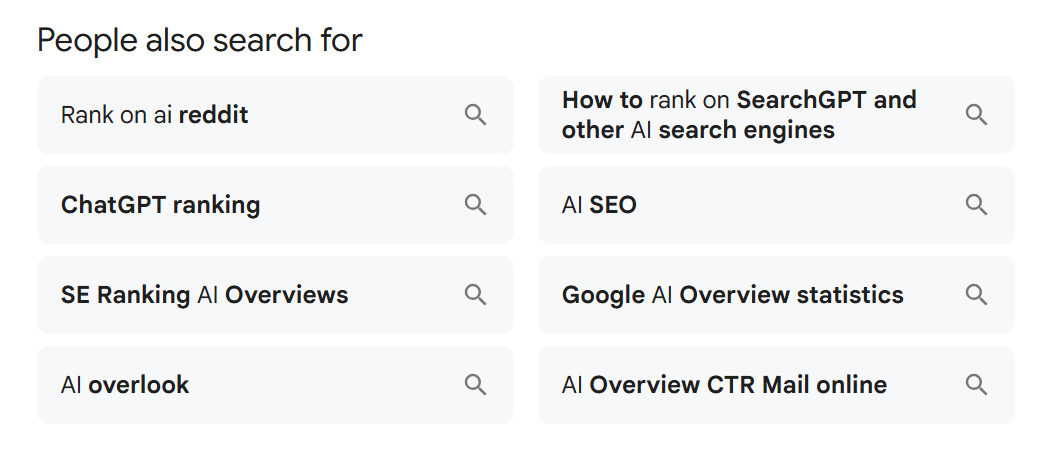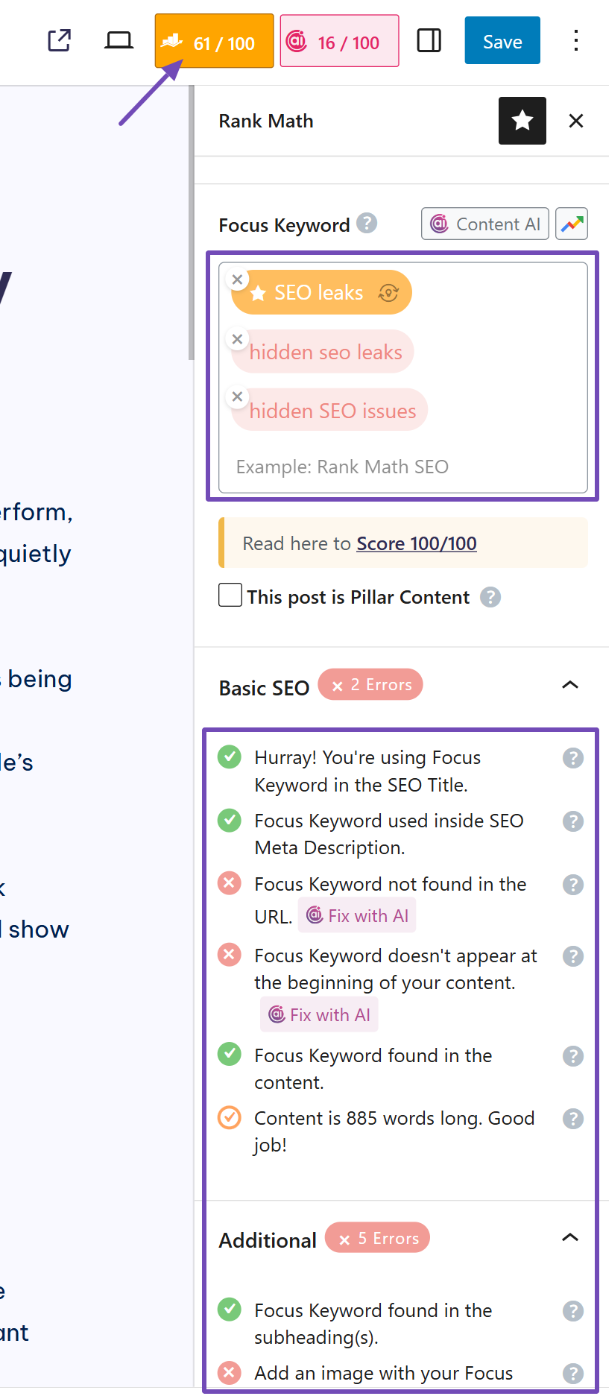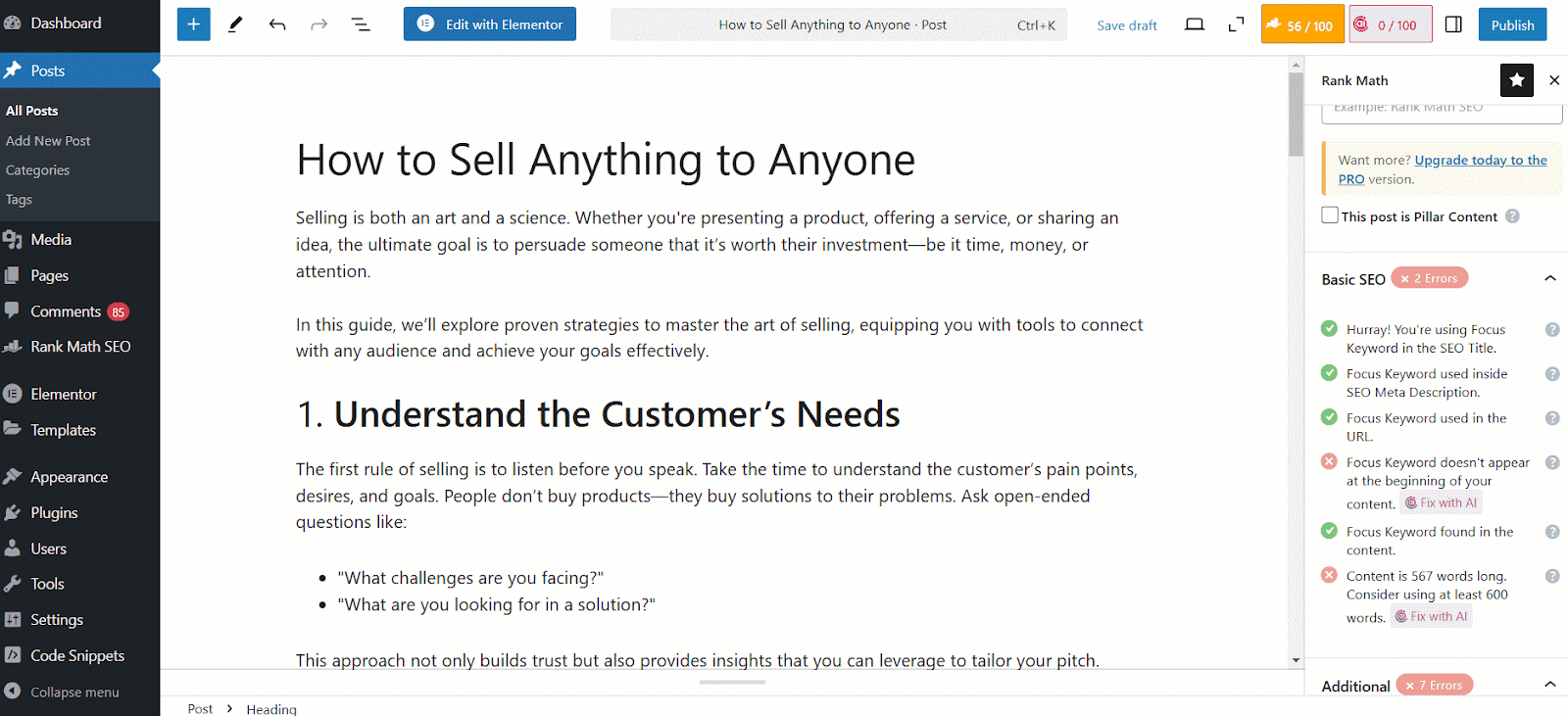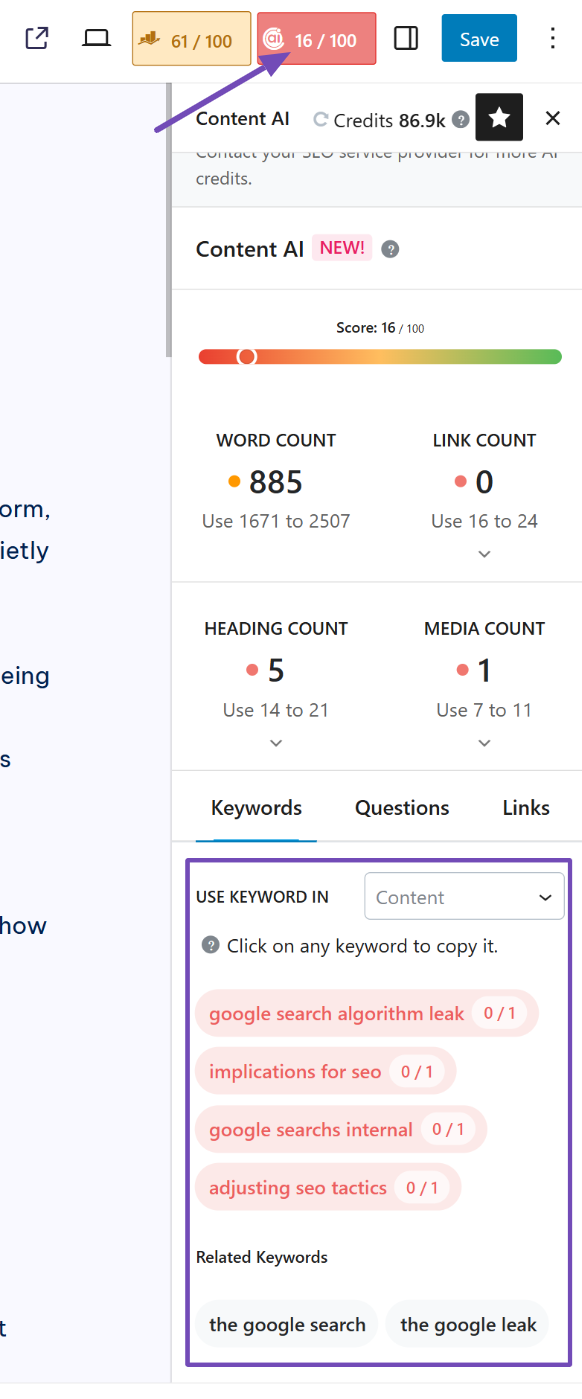If you’re still optimizing blog posts for just one keyword, you’re missing out on a ton of traffic.
People search with different terms, variations, questions, and long phrases, so your content needs to cover more ground. That’s where multiple keywords come in.
No, it’s not about keyword stuffing. It’s about targeting your primary keyword and weaving in a few related ones naturally.
But should you really try ranking a single page for multiple keywords? And how do you add multiple keywords in WordPress? That’s precisely what we’ll walk you through in this knowledgebase guide.
1 What Does Multiple Keywords Really Mean?
Using multiple keywords means targeting a main keyword along with a few closely related ones (semantic or secondary keywords) that naturally fit into the same content.
It’s not about forcing in every keyword you find from your research. For example, don’t try to mix “how to bake a cake,” “social media marketing,” and “affiliate marketing” in one post—that’s chaos.
Instead, if your main keyword is how to bake chocolate cake, you can also target terms like easy chocolate cake recipe or chocolate cake ingredients. They all point to the same topic, just phrased differently.
Google understands these variations, so you don’t need separate articles for each one. Just create one solid post that naturally includes them. That’s how you boost your chances of ranking for more searches, without confusing readers or diluting your content.
2 Why Multiple Keywords Matter for SEO
Years ago, SEO was all about exact-match keywords. If you wanted to rank for “how to tie a tie,” you had to repeat that exact phrase over and over.
That trick doesn’t work anymore. In fact, it can hurt your rankings.
Today, Google’s smarter. It understands meaning, not just words. So you can use related keywords that fit the topic, and still rank.
Why should you care? Because using multiple keywords in your content helps you:
- Rank for more search terms
- Improve your content’s depth
- Make your posts more helpful to real people
But here’s the thing: WordPress doesn’t let you optimize for multiple keywords by default. You don’t even get a field to plug in your main keyword, let alone secondary ones.
That’s where Rank Math comes in. It lets you:
- Set a main keyword
- Add multiple secondary ones
- Get instant feedback on how well your content’s doing
Basically, it handles the SEO part while you focus on writing content that ranks and actually gets traffic.
3 How to Choose and Use the Right Keywords
Before jumping into WordPress or Rank Math, slow down and get clear on one thing: What exactly do you want to rank for?
You don’t need paid tools for this.
Start with your Google Search Console to see what your site already ranks for. Then use Google Keyword Planner to check search volume and competition.
Want even more ideas? Just type your main keyword into Google. Use the autocomplete suggestions and scroll down to People also search for. Those are your long-tail and related keyword gems.

Once you’ve got them, pick two or three that make sense and fit naturally in your content. Don’t add trending keywords just for the hype. If they don’t align with your topic (user intent), they’ll confuse both Google and your readers.
Now, here’s the tip:
Write for people first, not keywords. Every keyword you choose should…
- Answer a real question
- Flow naturally in your content
- Add actual value
And yes—long-tail keywords are gold. They’re more specific, match how people search today (even with AI tools), and they convert better.
4 How to Easily Add Multiple Keywords in WordPress
If you’re using WordPress, the easiest way to manage multiple keywords is with the Rank Math SEO plugin. It’s beginner-friendly and handles most of the heavy lifting for you.

4.1 Add Multiple Keywords in the SEO Meta Box
To start, open the post or page you want to optimize inside the WordPress editor. Navigate to the Rank Math SEO meta box. In the Focus Keyword field, type in your main keyword, then go ahead and add your secondary keywords right there in the same field.
You can just hit Enter or separate them with commas, and Rank Math will recognize each one as a separate target.
Once you’ve added your keywords, Rank Math immediately begins analyzing your content.
It checks how well your post is optimized for each keyword, pointing out areas you’ve missed, spots where you might be overusing a keyword, and suggestions for readability or improvement.

If you see any flags, there’s even a Fix with AI button that helps you rewrite or insert keywords naturally where they’re needed.

For a full breakdown, check out our guide on optimizing WordPress articles with Rank Math.
4.2 Where Your Keywords Should Appear
Now, when it comes to where your keywords should actually go, your main keyword should ideally appear in the title, the meta description, the URL (slug), the opening paragraph, and maybe in a heading or two.
But don’t stress too much about memorizing all that. Rank Math already tracks those placements for you and gives you a live SEO score so you know exactly where you stand.
Secondary keywords don’t need to be forced. Just use them naturally throughout your content where they make sense. You’re not trying to rank for everything; you’re trying to add depth and context to your main topic.
4.3 Use Content AI for Secondary Keyword Ideas
If you want even more keyword ideas, you can go to the Content AI box. Then, enter your focus keyword, and it’ll show you a list of related terms along with suggestions on where to use them in the Keywords tab, like in headings, SEO title, or within the content itself.

When you’re done, your content will not only be optimized for your main topic but also rich with relevant variations that support it; all without sounding stuffed.
For more details, you can refer to our guide on how to use Content AI to optimize your posts.
To track how your keywords are performing, you can also use Rank Math’s Rank Tracker. It shows impressions, clicks, and overall progress for every keyword you’re targeting.
If you have any doubts or need assistance with Rank Math, don’t hesitate to reach out to our dedicated support team. We’re always available and willing to help.